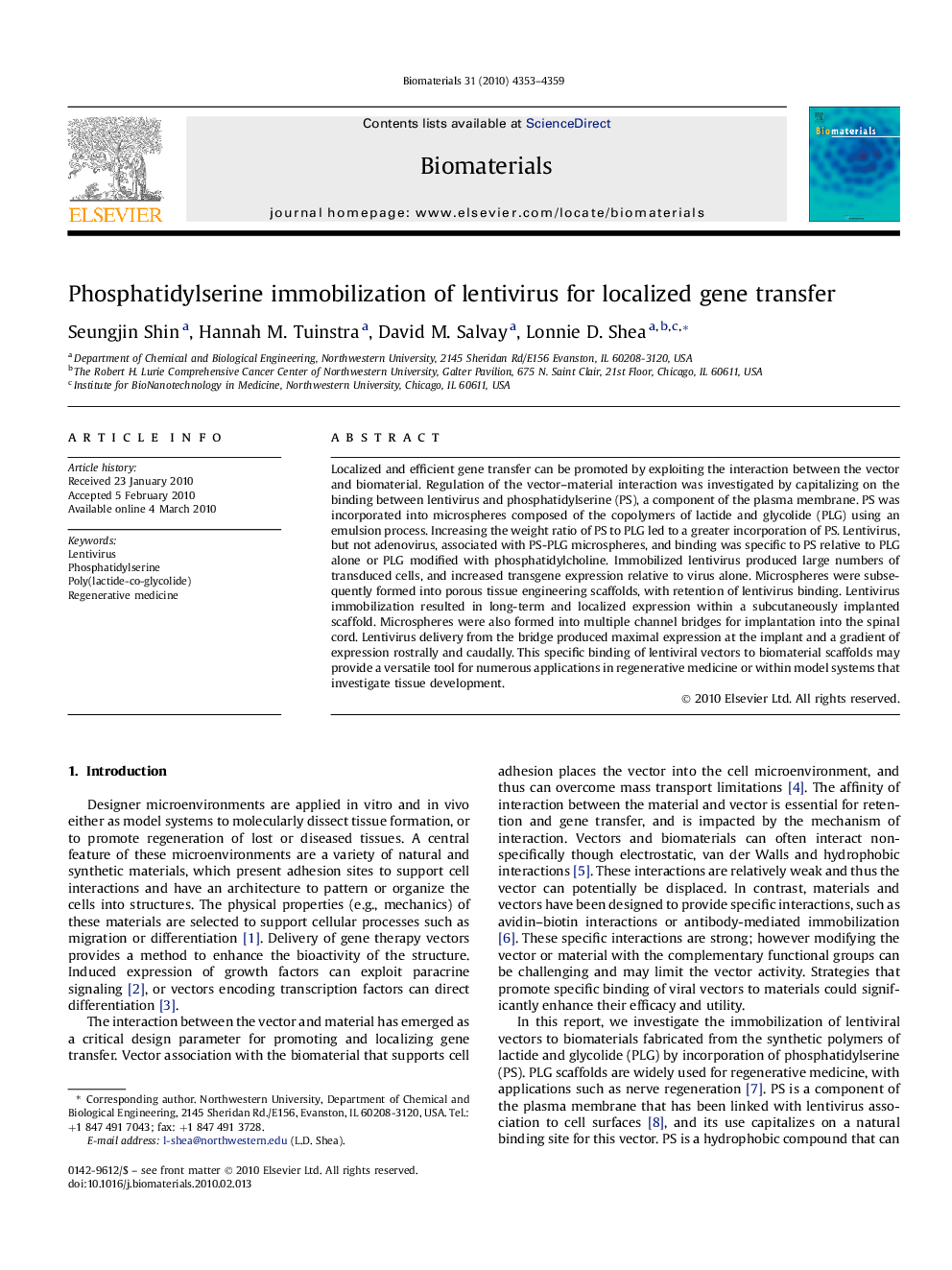| Article ID | Journal | Published Year | Pages | File Type |
|---|---|---|---|---|
| 8441 | Biomaterials | 2010 | 7 Pages |
Localized and efficient gene transfer can be promoted by exploiting the interaction between the vector and biomaterial. Regulation of the vector–material interaction was investigated by capitalizing on the binding between lentivirus and phosphatidylserine (PS), a component of the plasma membrane. PS was incorporated into microspheres composed of the copolymers of lactide and glycolide (PLG) using an emulsion process. Increasing the weight ratio of PS to PLG led to a greater incorporation of PS. Lentivirus, but not adenovirus, associated with PS-PLG microspheres, and binding was specific to PS relative to PLG alone or PLG modified with phosphatidylcholine. Immobilized lentivirus produced large numbers of transduced cells, and increased transgene expression relative to virus alone. Microspheres were subsequently formed into porous tissue engineering scaffolds, with retention of lentivirus binding. Lentivirus immobilization resulted in long-term and localized expression within a subcutaneously implanted scaffold. Microspheres were also formed into multiple channel bridges for implantation into the spinal cord. Lentivirus delivery from the bridge produced maximal expression at the implant and a gradient of expression rostrally and caudally. This specific binding of lentiviral vectors to biomaterial scaffolds may provide a versatile tool for numerous applications in regenerative medicine or within model systems that investigate tissue development.
